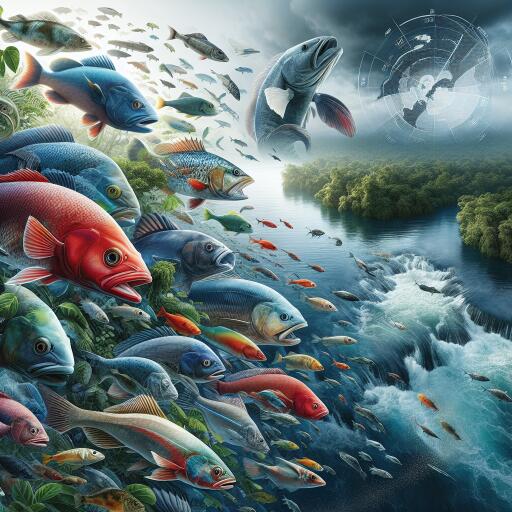
One-fifth of Mekong River Fish Species Face Extinction, New Report Highlights
The mighty Mekong River, a waterway stretching nearly 5,000 kilometers from its source in the Tibetan Plateau to the South China Sea, serves as a critical source of livelihood for millions across six countries—China, Laos, Myanmar, Thailand, Cambodia, and Vietnam. However, a recent comprehensive analysis from conservation experts raises alarming concerns over the sustainability of this vital ecosystem, particularly its diverse fish populations.
The multitude of threats contributing to the declining health of the Mekong include habitat destruction, agricultural expansion, aquaculture, sand mining, climate change, and the construction of hydropower dams that disrupt the natural flow of the river and its tributaries. The adverse effects of these activities on the river’s biodiverse ecosystem are profound, placing a significant portion of its fish species at risk of extinction.
A recent report titled “The Mekong’s Forgotten Fishes,” compiled by the World Wildlife Fund along with 25 other global marine and wildlife conservation organizations, sheds light on the dire state of the river’s fish species. The findings are grim: approximately 19% of the Mekong’s 1,148 fish species are on a path toward extinction. This includes 18 species categorized as “critically endangered” by the International Union for Conservation of Nature, such as the giant freshwater stingray and two of the world’s largest species of catfish and carp.
According to Zeb Hogan, a notable fish biologist and a leader in the conservation effort, hydropower development stands as a chief culprit in this environmental crisis. The construction of dams, particularly those proliferating in the river’s upper reaches, has been altering the river’s natural flow, affecting water quality, and obstructing the migration paths essential for the survival of these aquatic species.
The repercussions extend beyond environmental concerns, touching on the socioeconomic fabric of the region. The Mekong is responsible for more than 15% of the global inland fish catch, generating over $11 billion annually. This bounty is a cornerstone for the food security of approximately 40 million people residing in the Lower Mekong basin, who depend on these waters for their sustenance and livelihood.
Yet, hope is not lost. Hogan emphasizes the opportunity for nations within the Mekong Delta to join forces and mitigate the deleterious impacts on the river’s fish populations. “If we take action, collectively take action, to develop the river sustainably, there’s still hope,” he asserts.
The report underscores the urgent need for a coordinated, sustainable approach to river management and development. With concerted efforts, it is possible to preserve the rich biodiversity of the Mekong River and ensure the continued well-being of the millions who rely on its bounty.
As the Mekong continues to flow, so too does the chance for redemption and recovery of one of Southeast Asia’s most vital ecosystems. The call to action is clear: only through sustainable development and international cooperation can the future of the Mekong River—and its inhabitants—be secured.





Leave a Reply